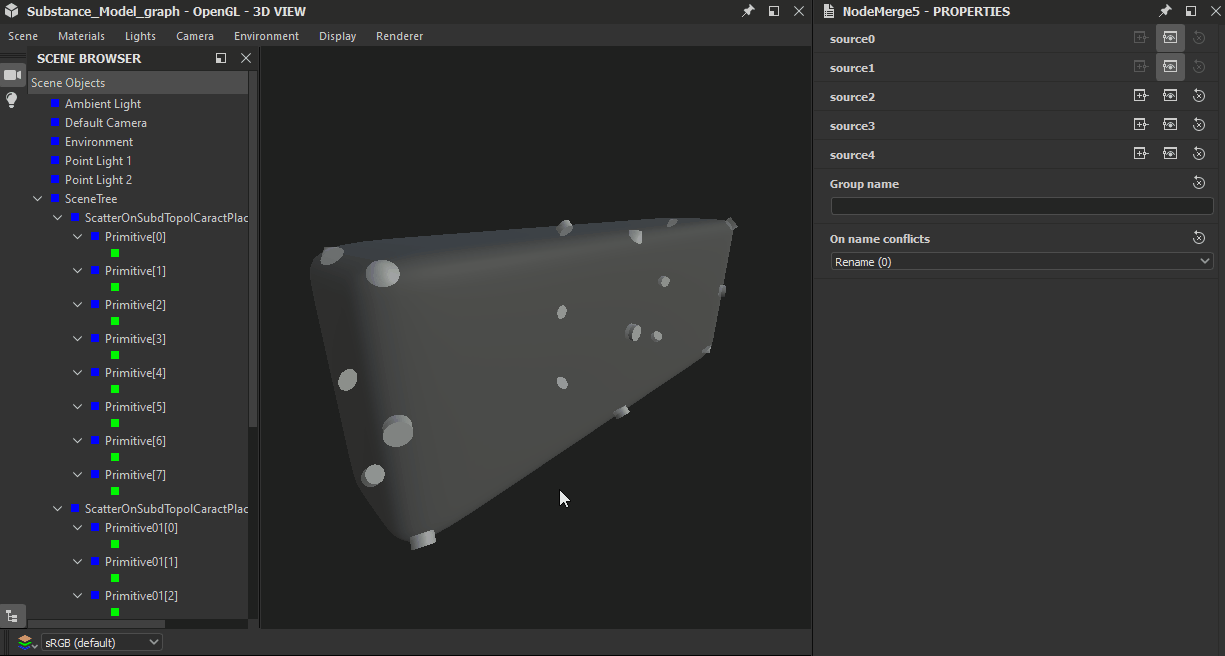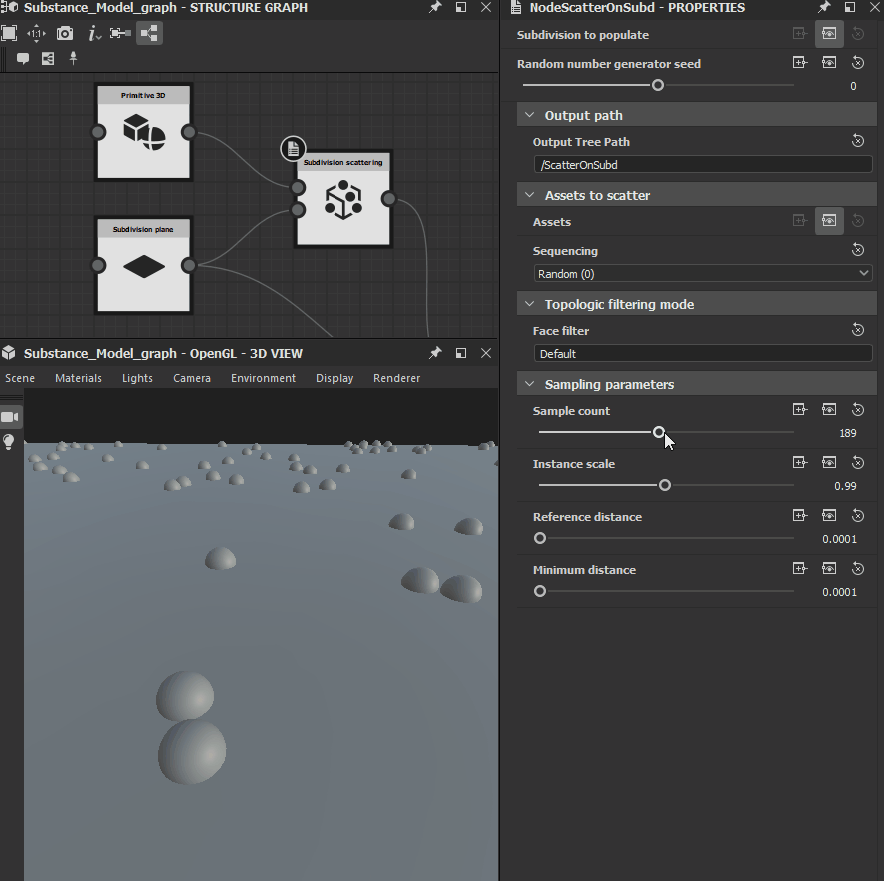Subdivision scattering


In: Substance Model graph/Distribution
Intermediate
Description
The Subdivision scattering node scatters instances of input elements at sampled locations on the surface of input SubD meshes. Scattering is controlled by a combination of sample count and distance between each instance.
The placement of instances is heavily influenced by the control mesh, in that instances are scattered on a single face of the control mesh until the maximum amount of coverage is reached for that face given the distance constraints. At that point, overflowing samples are placed on another face of the control mesh, and so on and so forth until either the maximum available coverage is met or the sample count limit is reached.
Only one instance is placed per sampled location. More samples and less distance between instances mean more instances can be scattered.
Parameters
- Output path
- Output scene path String
Sets the item name and possibly its containing groups. Learn more in the Path expressions and filtering section.
- Output scene path String
- Assets to scatter
- Assets Scene
Scene containing elements which should be used as a collection to pick from for generating instances. All elements directly under the root of the scene are included in this collection. - Sequencing Integer (selects an Enum index)
Controls the order in which elements from the input scene should be picked when generating instances. - Custom first element Boolean
Controls whether the first element in the instances generation sequence should be the first element of the input scene, or one set by the user.
Note: this parameter is only visible when Custom sequence is selected for the Sequencing parameter. - First element index Integer
Sets the index of the element in the input scene which should be the starting point of the Custom sequence. - Note: this parameter is only visible when Custom sequence is selected for the Sequencing parameter and the Custom first element parameter is set to True.
- Sequence String
Sets the sequence of elements to be used when generating instances, written as a index values separated by a space – e.g.1 3 5 4 2.
Note: Index values loop around if they are higher or lower than valid indexes for the input scene collection – e.g. for indexes1 2 3 4, 5 will correspond to 1 as in 1 - 2 - 3 - 4 - 1 (5) - 2 (6).
Note 2: this parameter is only visible when Custom sequence is selected for the Sequencing parameter. - Custom last element Boolean
Controls whether the last element in the instances generation sequence should be the last element of the input scene, or one set by the user.
Note: this parameter is only visible when Custom sequence is selected for the Sequencing parameter. - Last element index Integer
Sets the index of the element in the input scene which should be the ending point of the Custom sequence.
Note: this parameter is only visible when Custom sequence is selected for the Sequencing parameter and the Custom last element parameter is set to True.
- Assets Scene
- Subdivision to populate Scene
The input Scene holding the SubD meshes which instances should be scattered on. - Topologic filtering mode
- Face filter String
The tag of the face selection set which instances should be scattered on. Default means all faces are used. For any other value, faces belonging to a selection set which does not match the input tag are ignored for the scattering.
Note: Not all 3D authoring packages let you set a tag on a face selection set. Packages which support this feature include Autodesk Maya or The Foundry's Modo, for instance.
- Face filter String
- Sampling parameters
- Sample count Integer
The amount of samples performed on the surface of the SubD meshes. More samples mean more available locations for scattering. - Instance scale Float
Acts as a multiplier for the scale of scattered assets. - Reference distance Float
This value represents the average distance between instances as they are scattered on the SubD meshes. A higher amount means more spacing between instances. This means the available coverage on any individual face of the control mesh is met more rapidly, which means more faces will be covered quicker, but with less density. - Minimum distance Float
The minimum distance between instances. Since the Reference distance value is an average, this parameter can let you set a hard floor for the spacing between scattered instances.
- Sample count Integer
- Random number generator seed Integer
Random seed value used in the pseudo-random distribution of elements from the input collection.
Example Images



